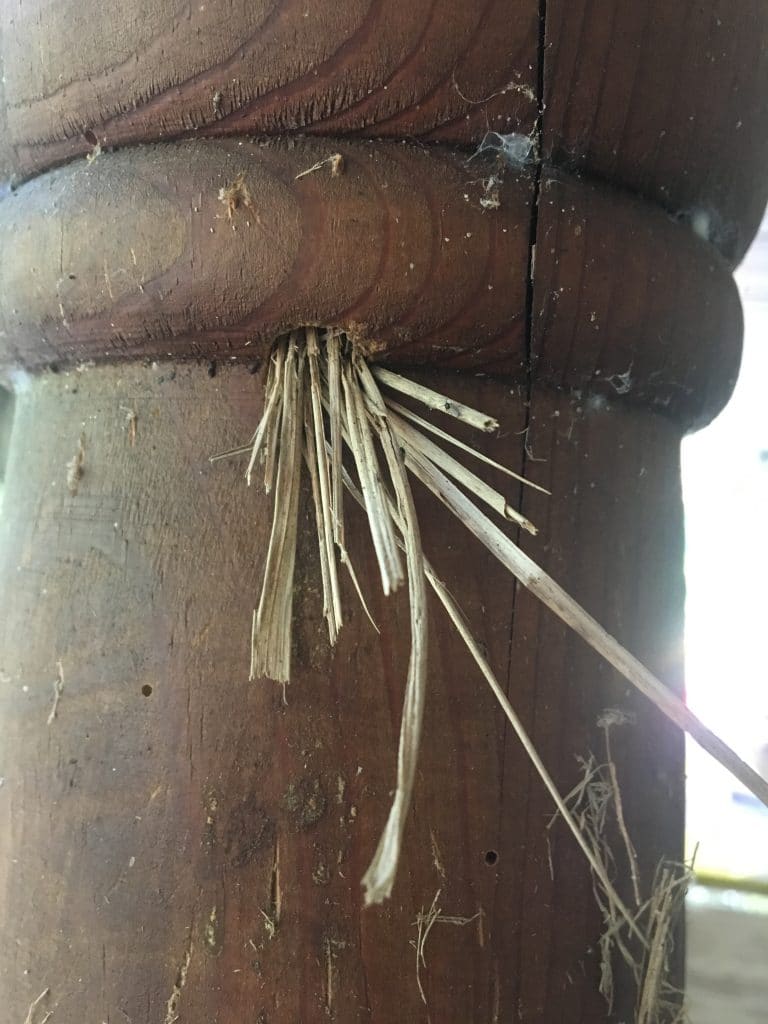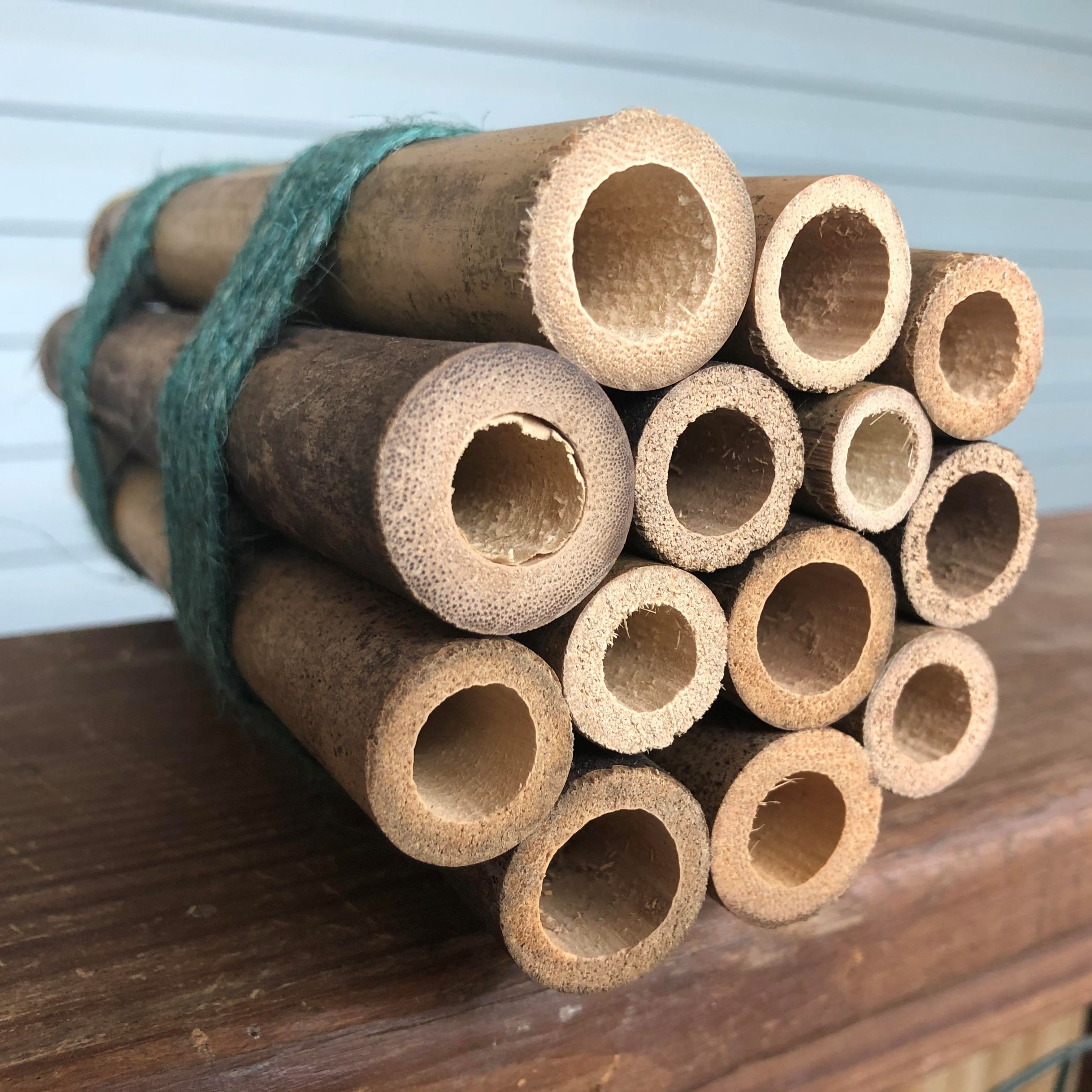Nature is never dull when it comes to oddities, things that to us seem inconsistent with our view of what should be normal. One example is the Brown Legged Grass-Carrying Wasp, a common insect that most of us would miss except for its “odd” habit of using pieces of grass to line its nest.
As with many solitary wasps and bees, their nests are placed in hollow stems of plants or holes in wood that were created by other insects. The perfectly round holes of Carpenter Bees that show up in the spring to deconstruct our homes, is a good example.
Used only once, these chambers are often repurposed by other insects, including Grass-Carrying Wasps. We may not even know what put those tufts of grass in those holes unless we catch them in the act. But worry not. Although as large as the more aggressive Red Paper Wasps, these are docile creatures, more interested in stinging the prey that they feed to their young.
If you were able to look inside those long, hollow holes, what you would find is a series of chambers, lined with pieces of grass and the bodies of the food source for the wasp larvae. Grass-Carrying Wasp prefers small tree crickets that are common in the canopy of our trees. The sting of these wasps paralyzes these insects but does not kill them. The growing larvae consume them one at a time.
Once the entire hole is filled with grass, food and an egg in each chamber, the good mother wasp places a final tuff of grass into the entrance of the hole, which is how we know she was there. Unless you take the time to sit and watch an open hole, these wasps are hard to spot. But Grass-Carrying Wasps are not the only kind of insects to use hollow stems or holes in wooden objects.
Blue Orchard Mason bees and Leafcutter Bees are also common across the southeastern U.S. As with honeybees and many other insects, including adult Grass-Carrying Wasps, these bees are important pollinators.
To attract these pollinators to your garden, try making a simple “bee house”, using hollow sections of bamboo or drilling holes in blocks of untreated wood. Bamboo sections or holes in wood should be at least 6-8 inches long and can be closely spaced. Holes sizes should be from ½ to 5/8 inch.
So, look for the abnormal in your walks in nature. What we think is not right is normal for something else.
Hope to see you in our great outdoors!





